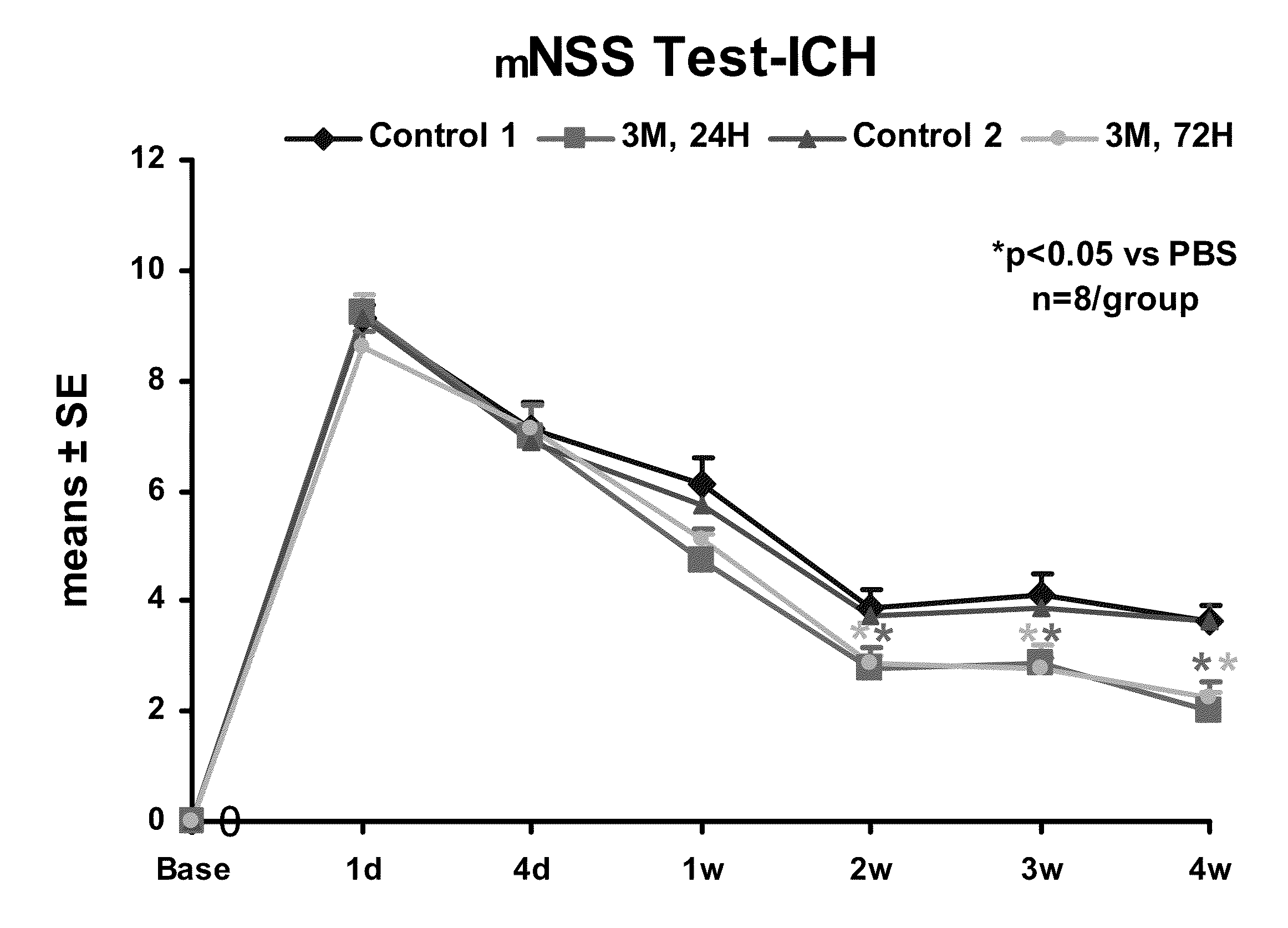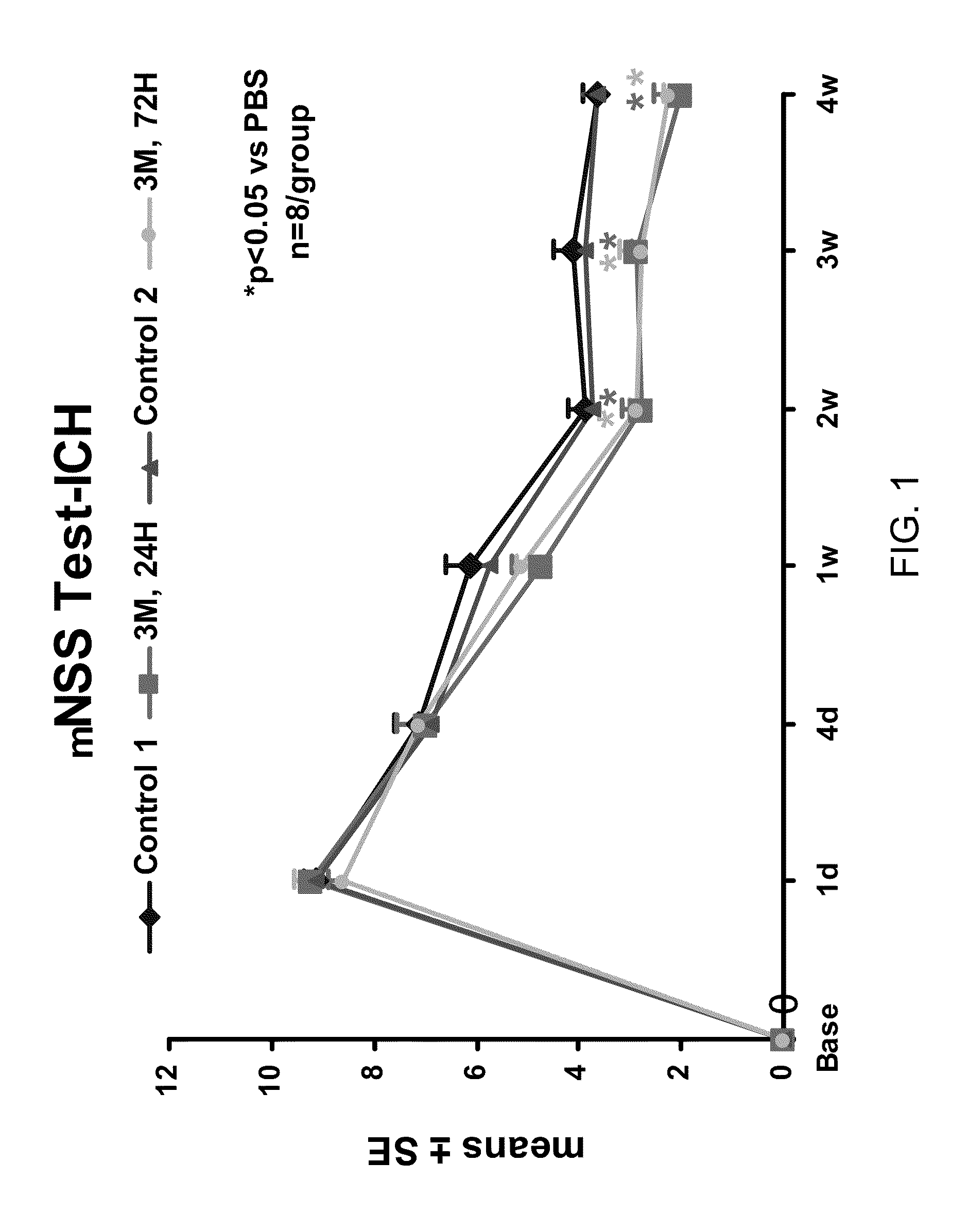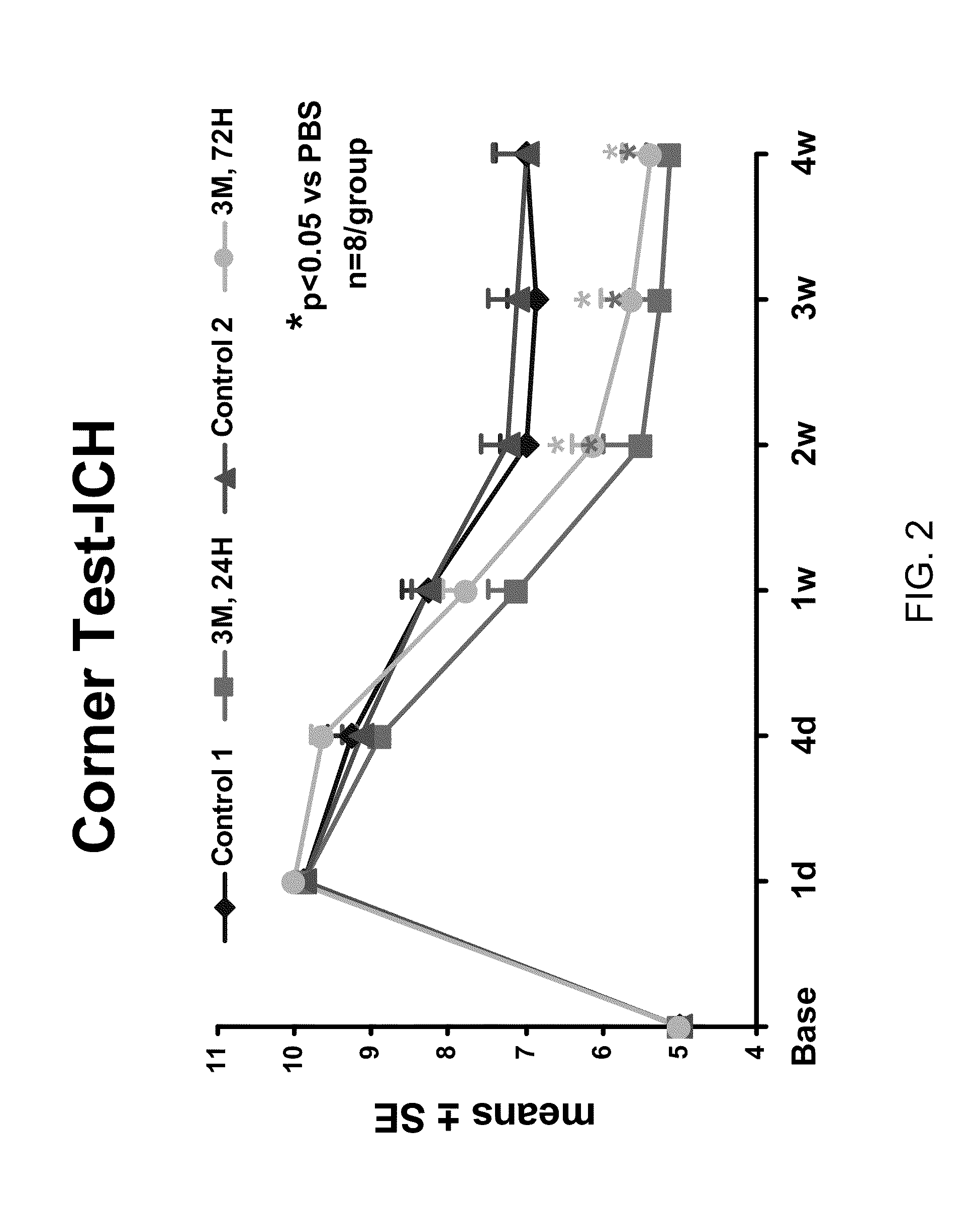Regeneration and repair of neural tissue following injury
a neurologic injury and cell-based therapy technology, applied in the field of neurologic injury cell-based or regenerative therapy, can solve the problems of less hope of recovery or cure, limited ability to expand in culture, and spinal cord injury, so as to improve neurological function, and reduce the number of apoptotic cells
- Summary
- Abstract
- Description
- Claims
- Application Information
AI Technical Summary
Benefits of technology
Problems solved by technology
Method used
Image
Examples
example 1
Long-Term Neural Differentiation of Cells
[0236]The ability of umbilicus-derived cells to undergo long-term differentiation into neural lineage cells was evaluated. The UTC were isolated and expanded as described in Examples 13-15.
[0237]Frozen aliquots of UTC (umbilicus (022803) P11; (042203) P11; (071003) P12) previously grown in growth medium were thawed and plated at 5,000 cells / cm2 in T-75 flasks coated with laminin (BD, Franklin Lakes, N.J.) in Neurobasal-A medium (Invitrogen, Carlsbad, Calif.) containing B27 (B27 supplement, Invitrogen), L-glutamine (4 mM), and Penicillin / Streptomycin (10 milliliters), the combination of which is herein referred to as Neural Progenitor Expansion (NPE) media. NPE media was further supplemented with bFGF (20 ng / ml, Peprotech, Rocky Hill, N.J.) and EGF (20 ng / ml, Peprotech, Rocky Hill, N.J.), herein referred to as NPE+bFGF+EGF.
[0238]In addition, adult human dermal fibroblasts (P11, Cambrex, Walkersville, Md.) and mesenchymal stem cells (P5, Cambre...
example 2
Effect of Administration of Cells Following Brain Injury on Neurological Function. Intracerebral Hemorrhage (ICH) Model in Rat
[0246]ICH was induced in male Wistar rats weighing 300-350 g by injecting 100 μl of autologous blood as essentially described by Seyfried, et al., J. Neurosurg, 2006; 104:313-318 (2006). Briefly, rats were anesthetized with xylazine (10 mg / kg) and ketamine (80 mg / kg). Once adequate anesthesia was achieved, the rats were maintained at 37° C. throughout the surgical procedure using a feedback regulated water heating pad. Under a dissecting scope, a 2 cm ventral skin incision was made along the crease formed by the abdomen and right thigh. Blunt dissection of the adductor muscles is used to visualize the right femoral artery. Five to ten millimeters of artery was carefully mobilized from the adjacent femoral vein and saphenous nerve. The artery was ligated at the distal end, and the proximal portion was temporarily blocked with a 4-0 suture. A PE50 catheter was ...
example 3
Effect of Administration of Cells Following Brain Injury on Cell Proliferation in the Subventricular Zone
[0251]Bromodeoxyuridine (BrdU), a thymidine analog, can be incorporated into cells' genomic DNA during the S phase of cell cycle. BrdU positive cells in the subventricular zone (SVZ) are considered to be progenitor cells undergoing DNA synthesis in the S phase of the cell cycle. The number of BrdU cells in the SVZ is used as an indicator of neurogenesis.
[0252]The rats received daily intraperitoneal injections (IP) of 100 mg / Kg of BrdU starting at 24 hours after ICH and subsequently for the next 14 days. After 28 days, animals were reanesthetized with ketamine (80 mg / kg) and (xylazine 13 mg / kg) IP injection, and sacrificed (first by draining all of the blood from the body via a heart puncture and flushing the system with normal saline and then 4% paraformaldehyde). The skull was then removed with a rongeur and the brain removed and subsequently fixed in 4% paraformaldehyde and sli...
PUM
| Property | Measurement | Unit |
|---|---|---|
| Fraction | aaaaa | aaaaa |
| Fraction | aaaaa | aaaaa |
| Fraction | aaaaa | aaaaa |
Abstract
Description
Claims
Application Information
 Login to View More
Login to View More - R&D
- Intellectual Property
- Life Sciences
- Materials
- Tech Scout
- Unparalleled Data Quality
- Higher Quality Content
- 60% Fewer Hallucinations
Browse by: Latest US Patents, China's latest patents, Technical Efficacy Thesaurus, Application Domain, Technology Topic, Popular Technical Reports.
© 2025 PatSnap. All rights reserved.Legal|Privacy policy|Modern Slavery Act Transparency Statement|Sitemap|About US| Contact US: help@patsnap.com



